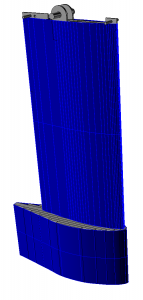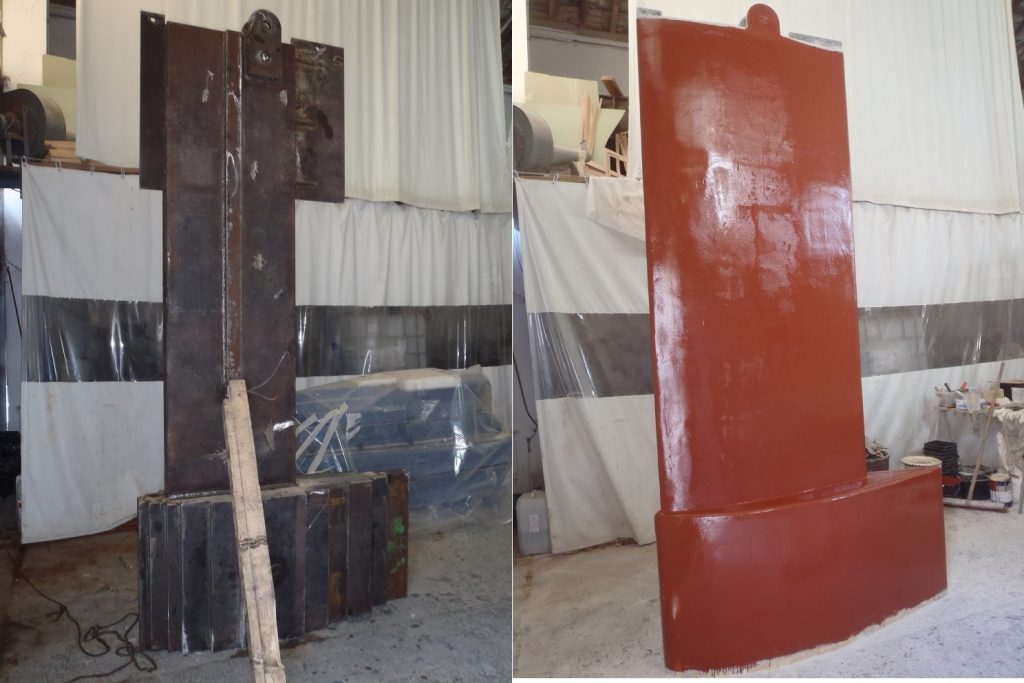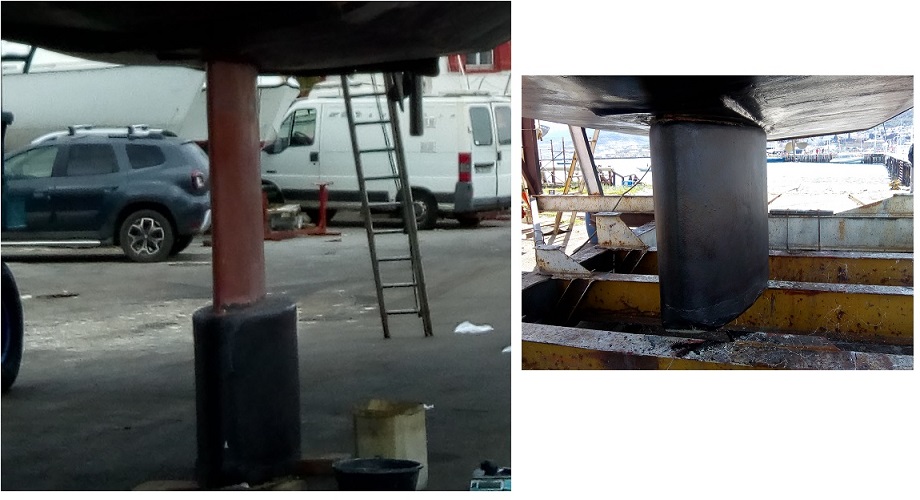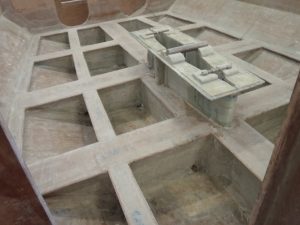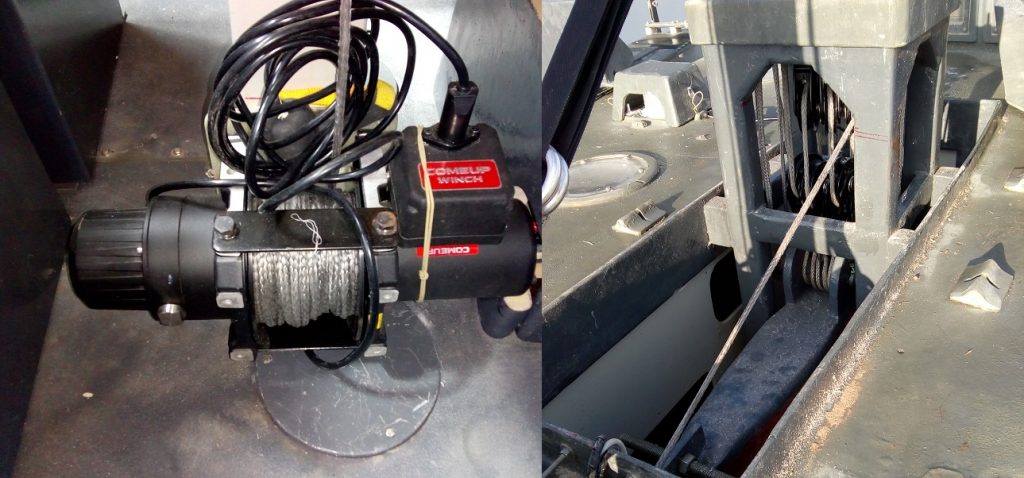Design
keel down, draft 2.90m keel up, draft 1.40m
total height 3.05m, total weight: 3.4 tons.
bulb : vertical shape, width 43cm, height 75cm, length 1.56m.
Why?
In open sea, stability in big waves and capacity to sail close to the wind.
The heavy, deep keel and the wide hull provide a high stability (the “righting moment”).
In coastal sailing, capacity to ground and get free easily.
The sturdy construction and the massive bulb allow to hit underwater rocks without damage.
The vertical lifting system allows to free the keel in any condition, grounded in rocks or mud, boat inclined or straight etc.
Why not a rotating keel?
A rotating lifting keel (or board) has to be flat to fit into the hull, therefore it is prone to bending in case of lateral impacts.
A vertical lifting keel stops the boat immediately on an obstacle, whereas with a rotating keel the boat may keep on going and ground completely.
Keel Construction
keel structure: steel planks keel shape: fiberglass epoxy
Keel slot and support
The keel is embedded in the girders, within very thick grass epoxy walls (thickness up to 110mm).
The keel is supported by 3 steel rods (main rod:60mm diameter).
Hauling system
Electric industrial capstan, using a 8mm dyneema rope with a 8 to 1 hoist and high load blocks
Safety considerations
The hauling system is oversized: capstan safety factor 1.7 (in addition to its internal safety factor), rope resistance 6000kg, blocks 4000kg each.
A safety rope holds the keel in mid position (in addition with the capstan internal clutch) when necessary.
For open sea sailing, blockers hold the keel in position in case of capsizing.
For coastal sailing, 4 planks made of polyethylene (not shown here) absorb the impacts.

